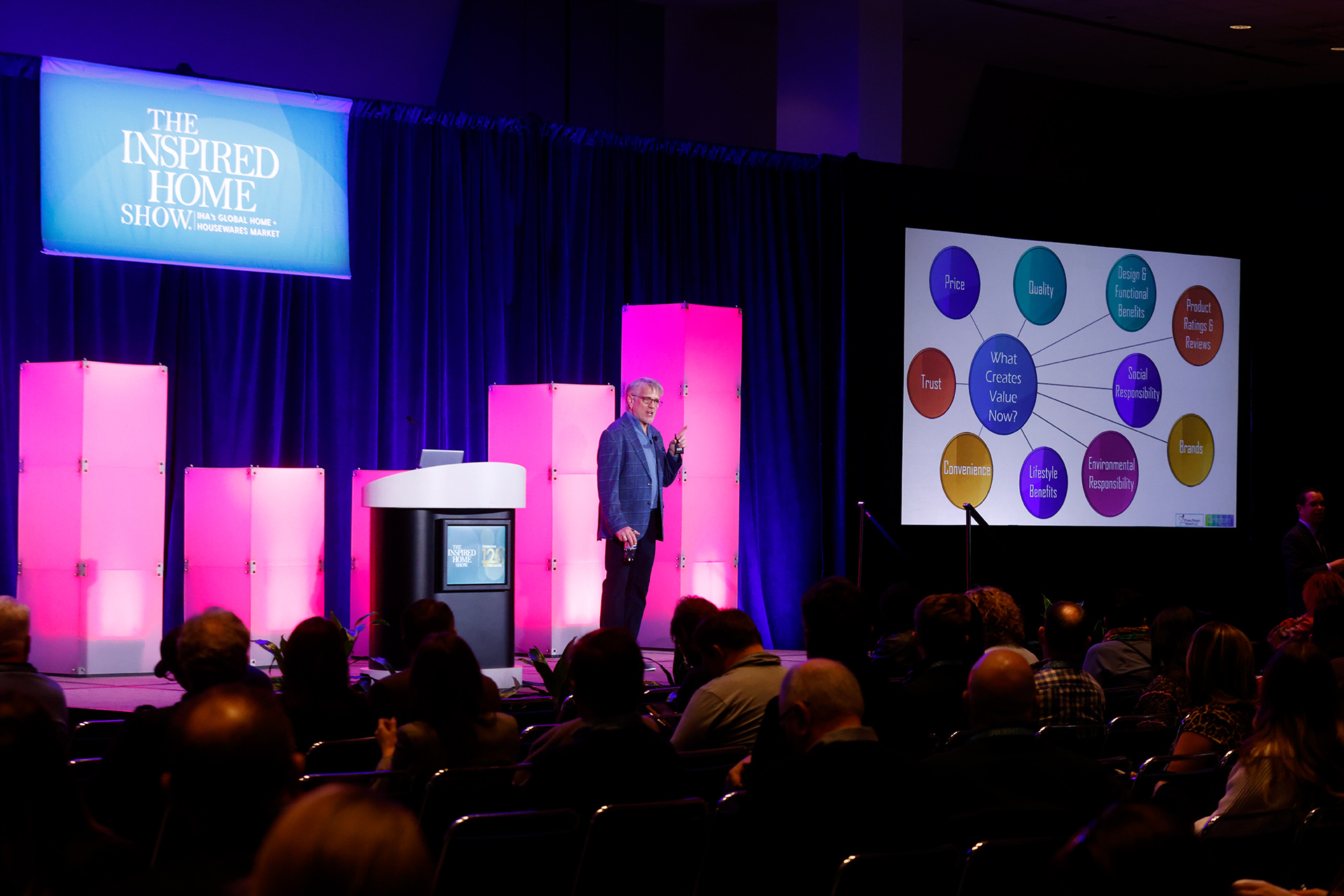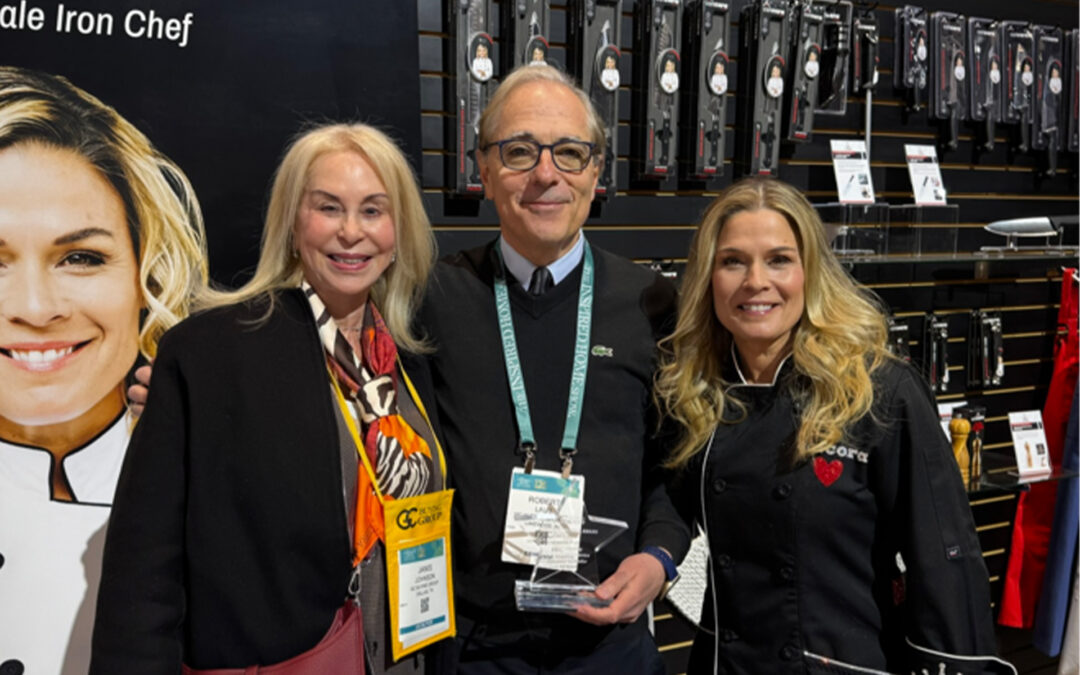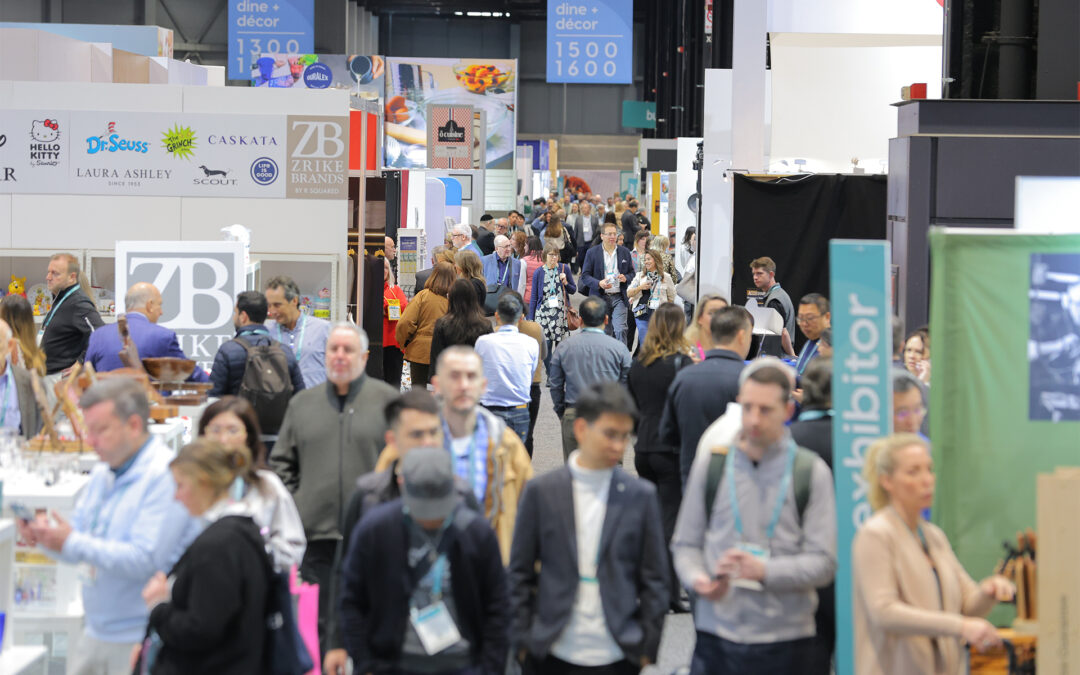While marketers have leaned heavily into cross-generational consumer research, there’s still merit in the housewares industry examining distinct generational traits when it comes to daily living and wellness goals, said Tom Mirabile, principal and founder of Springboard Futures, in a keynote presentation today at The Inspired Home Show 2025.
In his session, “The 2025 Home & Living Survey — New Insights on the Everyday Realities Driving Consumer Demand,” Mirabile unveiled the results of the 2025 Home and Living Survey, a new research collaboration between IHA and Springboard. The survey reveals consumers’ everyday realities, priorities and pain points from a generational perspective, exploring how these factors impact product choices and purchase decisions.
“The reason we say ‘perspectives’ is because we don’t act on realities alone; we act on perceptions. So, a lot of the things we buy, the choices we make, the things we want to own, are a result of the generation we were born into,” said Mirabile.
The survey primarily focused on four generations that make up about 20% of the population each: Gen Z, Millennials, Gen X and Baby Boomers. It revealed important generational differences, as well as opportunities among these groups regarding meal preparation and consumption, home entertaining, wellness and household tasking.
Key Takeaways by Generation
Generation Z: While Gen Z encompasses those 13-28 years old, the survey excluded those under 18. About 75% of this generation rents their homes. According to Mirabile, they are digital natives who demand authenticity, transparency and responsibility from brands, leaders, and influencers. They are highly invested in mental health and well-being and the generation most concerned about emotional wellness (56%). They’re attuned to climate change and think globally.
“If you aren’t socially and environmentally responsible, they don’t even consider your brand,” said Mirabile. “Make recycling easy for them. Make it buyable. Sustainability is table stakes right now. Look at all aspects of production (transportation), not just materials.”
Millennials: This optimistic, collaborative, yet restless generation includes those ages 29-44, about 22% of the population. They prioritize experiences like travel and personal growth over material acquisition, said Mirabile. These digital pioneers leading the way for older generations. Millennials also prefer access over ownership and struggle with economic pressures like personal debt.
Surprisingly, even more of their debt can be attributed to the experiences they invest in, like travel, according to Mirabile. “Not only do things have to be a great experience for Millennials, but they also have to provide layered features and benefits,” he said, citing the need for thoughtfully designed, multi-functional products, especially for space-challenged urban dwellers.
Gen X: This generation, now 45-60 years old and 20% of the population, is self-reliant. Nearly 70% own a home. Many lost much of their savings in the 2008 recession, making them more skeptical and resourceful.
These latchkey kids don’t expect a lot of stability. They’re the generation with the most disposable income and the most debt, which is one reason why they (63%) plan to cook more meals at home in 2025. They embrace alternative lifestyles, are early adopters of technology, and were another bridge generation that helped Boomers adopt technology.
Baby Boomers: This competitive and driven generation is also idealistic. These 61-79-year-olds, 21% of the population, have the most savings and wealth per capita of the four generations. They’re defined by optimism, ownership and affluence.
“In their youth, they were very idealistic; now they’re moving towards nostalgia. So, you see that more in products now,” Mirabile said. “Also, they really value face-to-face communication, and so wherever you can, bring that in.”
Meal Making Trends
Mirabile also highlighted other important housewares industry trends that emerged from the 2025 Home and Living Survey, including:
- Cooking at Home Remains Popular: The home cooking habit established during the pandemic will continue in 2025, with most surveyed (58%) hoping to do it even more in the coming year, as people see it as affordable (61%) and healthier (59%) than buying prepared foods and eating out. However, the generational differences are pronounced, with Millennials and Gen Z (69%) saying they plan to cook more at home than Baby Boomers (35%). Another group looking to cook more at home: males (65%), especially in cities.
- More Homemade Snacks: One surprising finding was that a sizable group of respondents reported that weekday snacks were either semi-homemade (33%) or mainly homemade (30%). “Consumers are taking snacks back because premade snack foods are expensive,” Mirabile said, especially for Gen Z and Millennials. Those generations also desire healthier snacks with less packaging. Homemade can solve that.
- People Taking Food Made at Home On-the-Go: While most people prepare food at home to consume at work (49%), many also make food to take and consume on their commute (39%), at school (38%) and at leisure/outdoor/sport/events (37%). Mirabile said there’s an opportunity for the industry to create more takeaway occasions faster and easier for consumers.
- Meal Prep Time Consistent Every Day of the Week: Another surprising finding is that respondents spend the same or less time preparing meals during the weekend as they do during the week. “We’ve built an audience of people who know how to cook and enjoy it,” Mirabile said. This puts to rest the myth that people spend more time on the weekends preparing homemade meals and instead focus more of their time and energy on other things, like friends and family.
- Meal Clean-Up is the Worst Part of Cooking at Home: The top consumer pain point for home cooking is after-meal clean-up (51%), with the time it takes (47%) being cited as the number one reason it’s so unpopular. Mirabile said there’s an opportunity for the industry to create products that help with this dreaded task and we are starting to see more brands address this need.
In the coming days, a video recording of the program will be posted on the show’s website at TheInspiredHomeShow.com/education/#keynotes.





